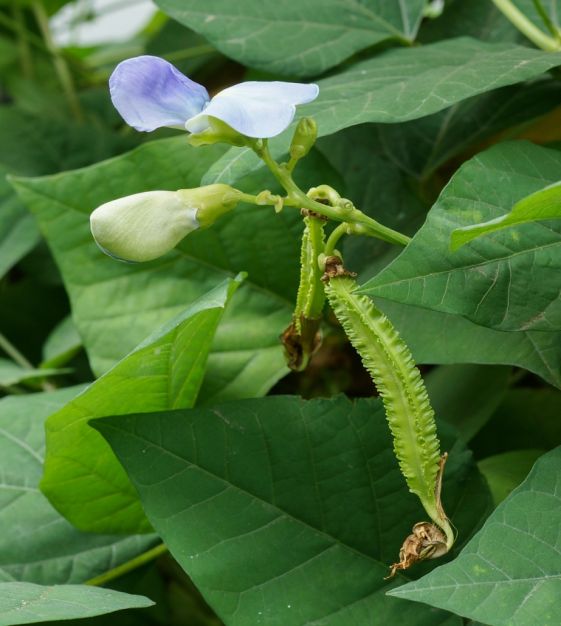Back to Top
Day-Neutral Winged Bean
75-85 days. While most Winged Bean varieties require short days to bloom, leaving inadequate time at the end of the season for beans to form in temperate climates, this day-neutral variety is more suited North American gardens and will bloom in time for a harvest of tender pods by late summer or fall. (OP.)
First photo: Prenn, CC BY-SA 3.0 Second photo: Eric Toensmeier CC BY 2.0
One packet of about 50 seeds
First photo: Prenn, CC BY-SA 3.0 Second photo: Eric Toensmeier CC BY 2.0
One packet of about 50 seeds
- Buy 10 for $5.80 each and save 10%
- Buy 50 for $4.85 each and save 25%
- Information
- Gardening Tips
This new-to-the-U.S. Asian vegetable is the total package. All parts of the plant are edible! The green pods sport 4 ruffly wings along their length and, when harvested less than 4 inches long, are wonderful grilled and sauteed, with a flavor reminiscent of string beans and asparagus. Larger, mature pods yield flavorful beans that can be dried for storage. The protein- and nutrient-rich leaves can be eaten fresh or cooked like spinach, and the delicate, pale blue flowers are edible, too. Even the roots are delicious, and have more protein than both potatoes and yams. Can it get any better, you ask? Why yes, it can! As a legume, Winged Bean fixes nitrogen in the soil, making your garden healthier and more productive. A tropical vine, Winged Bean is grown as an annual in northern climates, where it grows like a pole bean up to 12' tall. Seeds can be a challenge to germinate. To maximize success, nick each seed and soak them in warm water for 24-48 hours, changing the water 2-3 times a day, before sowing outdoors after all danger of frost has passed in spring. Choose the hottest, sunniest spot in your garden and sow the seeds up to 1" deep and 1-2' apart in trellised rows spaced 3-4' apart.
Average seed life: 2 years.
Average seed life: 2 years.
This new-to-the-U.S. Asian vegetable is the total package. All parts of the plant are edible! The green pods sport 4 ruffly wings along their length and, when harvested less than 4 inches long, are wonderful grilled and sauteed, with a flavor reminiscent of string beans and asparagus. Larger, mature pods yield flavorful beans that can be dried for storage. The protein- and nutrient-rich leaves can be eaten fresh or cooked like spinach, and the delicate, pale blue flowers are edible, too. Even the roots are delicious, and have more protein than both potatoes and yams. Can it get any better, you ask? Why yes, it can! As a legume, Winged Bean fixes nitrogen in the soil, making your garden healthier and more productive. A tropical vine, Winged Bean is grown as an annual in northern climates, where it grows like a pole bean up to 12' tall. Seeds can be a challenge to germinate. To maximize success, nick each seed and soak them in warm water for 24-48 hours, changing the water 2-3 times a day, before sowing outdoors after all danger of frost has passed in spring. Choose the hottest, sunniest spot in your garden and sow the seeds up to 1" deep and 1-2' apart in trellised rows spaced 3-4' apart.
Average seed life: 2 years.
Average seed life: 2 years.




